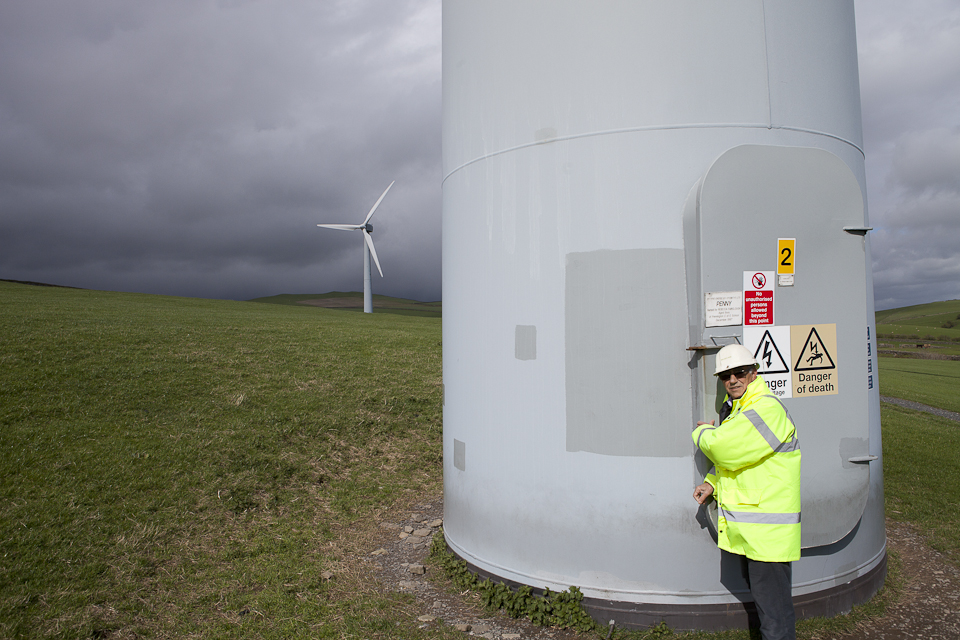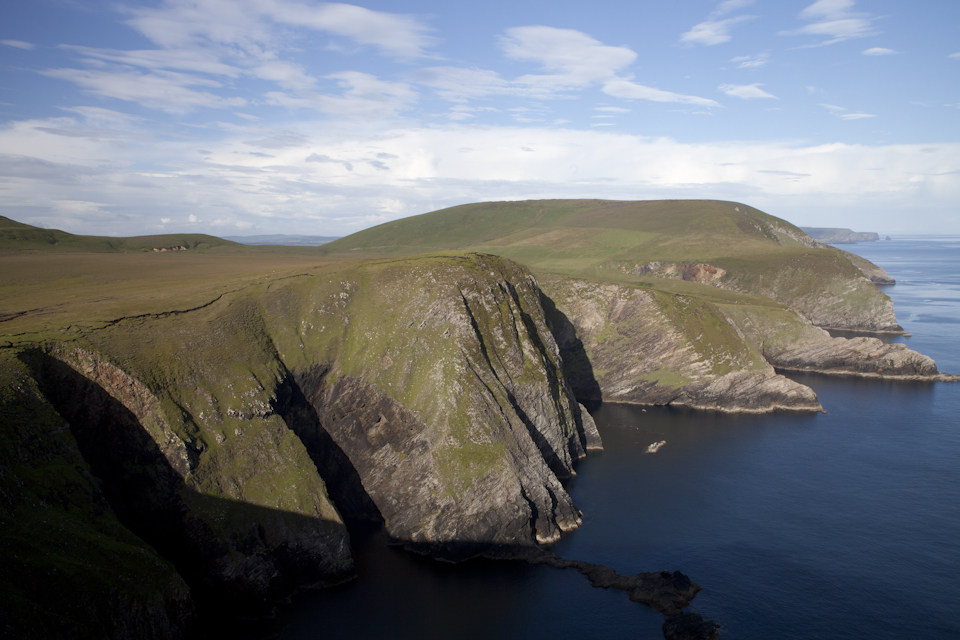Community ownership of renewable energy is still an alien concept to most people in the UK. Media reports are invariably negative whenever the two words ‘community’ and ‘wind’ appear in the same sentence. And yet, there are a small number of individuals who are determined to show that it doesn’t need to be this way. Jack Heslop*, site manager of Baywind Energy Cooperative, is one such individual. Baywind was established by a group of concerned locals in Cumbria, Northwest England back in 1996. I spoke with Mr. Heslop in his car as we sought shelter on the windswept Harlock Hill, one of two sites owned by Baywind. “There are 1,300 people invested in this scheme. Empty field, wind turbines, 15-17 year ago, people thought we were crazy. Wind turbines, what’s all that about? But these people put their money into it because they believed…because they knew climate change was coming. Even then”. The concept has since expanded under the umbrella of Energy4All, a not-for-profit social enterprise created by Baywind in 2002, which now represents seven renewable energy coops throughout the UK from its nearby base in Barrow-on-Furness. Even if you aren’t passionate about saving the planet, it still makes sense to invest in community energy. Baywind’s model has proven that it can make a steady return over the years – around 10% for the last financial year alone. “That’s because we’ve got a good wind farm manager, you see, that keeps the wind turbines going”, he says laughing to himself.
Baywind are currently in the process of repowering their site at Harlock Hill replacing the five wind turbines with a similar number of larger, more efficient models. This will quadruple the maximum output to 11.5 MW, enough to power 6,400 households. But they are facing hurdles every step of the way. “This site falls between two authorities. One half is South Lakelands and the other half is Barrow. We were turned down by South Lakeland because of the visual [impact]”. When I met with Mr. Heslop in May 2013, Barrow Council had yet to vote but they have since approved the application. This paves the way for Baywind’s partner, Infinergy, to appeal the planning decision of South Lakeland Council. “If this wind farm goes ahead there’ll be £35,000 going in to the local community to do what they like with it. We’ll have nothing to do with the way it’s given out”. He later adds, “Personally I’d rather see the money go into a fuel poverty fund to help people pay their bills”.
Fuel poverty is indeed a very real issue in these harsh economic times but too often the blame is laid at the door of the wind industry. “I do believe that all energy gets subsidized, doesn’t it?” he questions hesitantly. “Over the years, no one worried about where their electricity came from. They don’t see it. But all of a sudden…I need to have a windfarm next to me or a generating station of any sort next to me. It makes them think”. This attitude towards energy is strikingly similar to many people’s outlook towards food, and in particular, meat. Consumers want to be able to pick up a freshly cut steak in a local supermarket and not worry about where it came from, if the animals were reared in a humane way. They put all of their misplaced trust in the retailer and the supply chain, until the next scandal comes along, that is.
One of the most unexpected impressions that struck me during my visit to Cumbria is just what a hilly landscape it is. Sometimes I found that I simply couldn’t find the wind turbine (or the access road) that I had caught a glimpse of earlier, especially when I really wanted to find it. You’ve heard of the elusive storm chasers in the US? Well, welcome to the unlikely world of the wind chaser. So what about concerns over the visual impact on landscape in Cumbria? “You’ve got to protect the landscape, but come on, what’s natural around here?” he says inquiringly. “It’s all evolved over the years. It’s not natural. It’s been mined [referring to the nearby slate quarry], there used to be a forest on it. Everything changes. This is a working landscape. Telephone towers over there, two of them either side of us”, pointing through the car window.
Recent proposals by the UK government to give local councils greater powers to reject wind developments in their jurisdictions whilst also requiring greater contributions to community benefit funds will not empower a fair representation of local communities. No doubt, local communities need to see more direct benefits from wind, and any other infrastructure developments (road, rail, power stations) for that matter. But some perceive the community fund to be a bribe and it rarely appeases the vocal minority who are fearful (whether justified or not) of local house prices being negatively impacted. Up to 20% of Denmark’s energy needs are currently met by wind, of which 80% is met by 2,100 community-owned wind farms. These are communities that have a real stake and a long-term return through the shared ownership of wind farms in their locality.
But it’s not all doom and gloom. “One of the nicest things I do on this wind farm… we’ve had every school in the area come here”, he announces proudly. “We’ve had planners, we’ve had bankers, we’ve had coach-loads from Japan, Italy and Australia. They’ve all come here because it’s a community owned wind farm and I’ve never had one person that didn’t like it”. So what about the future for community-owned energy?“I think it’s always going to be challenging. It’s just that risk money…if you don’t get your planning, you lose your money”, he replied shaking his head. If it’s already taken two or three years since first applying to replace five community-owned turbines that have already stood in a field for 15 years, what hope is there for any new developments?
This article is part of a series exploring wind power in the landscape. Tilting at windmills is an ongoing photo project that has so far travelled to East Anglia and Cumbria in England. Colin Cafferty is a documentary photographer based in London who focuses on energy, sustainability and environmental issues.
Useful links –
http://www.climatechangecafe.com
*All views expressed by Mr. Heslop in this article are his own and do not represent the official stance of Baywind Energy Cooperative or Energy4All in any way.
Originally published in 2013




Recent Comments